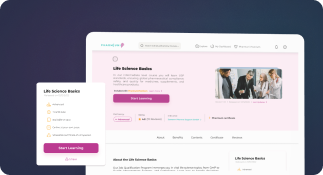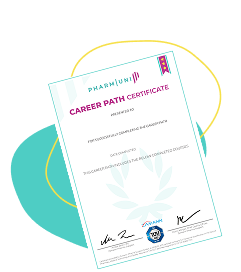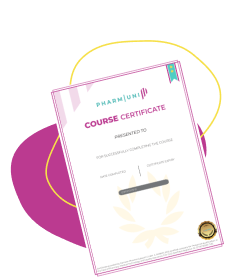Pharma and life sciences jobs keep growing, even in a complex global economy. U.S. life sciences employment reached a record 2.1 million roles in 2025, and demand for skilled graduates stays strong. In many regions, analysts expect double-digit life sciences job growth over the next decade. A Pharma students CV now works as your personal lab report.
At the same time, more pharma students compete for internships, trainee roles, and master’s or PhD spots. Pharmaceutical companies reported hundreds of structured undergraduate placements in 2024 alone, most of them long, one-year opportunities.
A Pharma CV for Students shows your data, your experiments, and your potential in one or two pages. A clear, focused CV helps you:
- Win interviews for CV for pharma internship roles.
- Stand out for entry-level pharma CV positions.
- Support pharma CV for PhD application and scholarships.
This guide walks you through structure, sections, and formatting. You will see what employers look for and how to show your best version on paper.
What is a Pharma Student CV?
An entry-level CV presents your education, skills, and early experience for the pharmaceutical world. It serves students who:
- Apply for lab or quality internships.
- Look for first roles in manufacturing, R&D, or pharmacovigilance.
- Target research assistant posts or PhD programs.
Unlike a generic student resume, a pharma CV for students links everything back to medicines, patients, and data. Therefore, you do not just list modules and grades. You connect them to real industry needs: GMP, documentation, data integrity, and safety.
Recruiters know freshers bring limited experience. However, they still expect clear pharmaceutical skills for students such as:
- Basic understanding of GMP or GLP.
- Safe lab behaviour and clean documentation.
- Comfort with data, statistics, or software tools.
So you use your student resume pharma to show potential, curiosity, and reliability, even before your first full-time job.
Key Sections Every Pharma Students CV Must Include
Use these key sections to build a strong CV:
- Contact information
- Professional summary (student-friendly version)
- Education (highlight relevant coursework)
- Skills (technical + soft)
- Projects / lab work / Certifications / Internships
1. Contact information
Start simple and clean. Recruiters need to reach you fast.
- Full name.
- Mobile number with country code.
- Professional email (avoid nicknames).
- City and country.
- LinkedIn URL and, if relevant, research profile (ORCID, ResearchGate).
Keep this section on one or two lines. Therefore, you save space for content that sells your value.
2. Professional summary
Next, add a short summary at the top of your Pharma students CV.
Write 3–4 lines that:
- State your current status: “Final-year BPharm student…”
- Mention your focus: QA, clinical research, pharmacovigilance, production, or R&D.
- Highlight 3–4 strengths, for example: “GMP basics, HPLC practice, strong documentation, team projects.”
- Add a goal: “Seeking CV for pharma internship in QC or QA.”
Use active verbs and show direction. For example:
“Final-year pharmacy student focused on quality and safety. Completed sterile compounding module and validation project. Enjoy structured documentation and teamwork. Seeking freshers pharma CV entry role or internship in QA or QC.”
3. Education
Education forms the core of your pharmacy student CV format. However, you should filter it.
List:
- Degree, university, city, country.
- Start and expected graduation dates.
- Thesis topic or key project (one line).
- GPA or grade, only if it helps you.
Then add relevant coursework as short bullets, for example:
- Pharmaceutical Technology and Unit Operations.
- Quality Management and GMP.
- Biopharmaceutics and Pharmacokinetics.
- Pharmacovigilance and Regulatory Affairs.
This approach supports both CV for pharma internship and pharma CV for PhD application, because it shows your academic fit for advanced work.
4. Skills
Now show your pharmaceutical skills for students in a clear skills block.
Split it into two parts:
Technical skills (hard skills):
- Lab: titration, chromatography basics (HPLC/GC), aseptic technique.
- Quality: GMP basics, SOPs, deviations, CAPA concepts.
- Data and tools: Excel, basic statistics, LIMS or ELN exposure, coding basics if relevant.
Soft skills (interpersonal skills):
- Communication skills: clear documentation, lab meeting presentations.
- Interpersonal skills: teamwork in group projects, cross-cultural collaboration.
- Emotional intelligence: empathy in patient-facing roles, conflict handling in teams.
Use short, specific phrases. Avoid vague claims like “hard-working” without proof.
5. Projects / lab work / certifications / internships
This section often sells your entry-level pharma CV. Therefore, invest time here.
Group items under a single heading or use small sub-headings:
Projects and lab work
- “Validation of tablet dissolution method using UV–Vis.”
- “Stability study of suspension under different storage conditions.”
For each key project, briefly note:
- Aim.
- Techniques used.
- Result or outcome (even if simple).
Certifications
Add short courses that support your CV tips for pharma freshers:
- Online GMP course with final test.
- Data integrity or documentation course.
- Pharmacovigilance basics course.
Internships / placements
Internships really change your chances. In general, over 66% of interns convert to full-time roles and often earn more later. Therefore, describe each placement clearly:
- Company, department, and dates.
- 3–5 bullets with your main tasks.
- Tools you used and what you learned.
Focus on industry language: batches, deviations, audits, case processing, or safety reports
CV Formatting Tips for Pharma Students
- Keep it short: Keep your Pharma students CV to one page unless you have strong extra projects or publications.
- Use a clean layout: Choose a simple font, clear headings, and enough white space so recruiters scan your CV fast.
- Follow a clear order: Use a logical flow like Summary → Education → Skills → Projects/Experience → Certifications to guide the reader.
- Write with bullet points: Use short bullet points with active verbs so every line shows clear action and value.
- Show small results: Add numbers where possible to prove impact, such as samples handled, batches supported, or reports prepared.
- Adapt for each application: Match your CV to each role by updating keywords, skills, and summary to fit the job or internship ad.
- Keep dates and style consistent: Use one date format and a consistent style across the whole CV to look professional and organized.
- Check spelling and pharma terms: Review language, drug names, and GMP terms carefully to avoid errors that damage credibility.
- Send as PDF: Export your Pharma students CV as a clearly named PDF file so formatting stays stable for recruiters.
These simple changes help your internship CV pharma stand out in a crowded inbox.
Final words
You now know the core of a strong Pharma students CV in just a few steps. Start with a focused 2–3 line summary, then build around the 5 key sections recruiters expect: contact details, summary, education, skills, and projects/internships. Spend 1 focused hour on your first draft, then refine it for each CV for pharma internship, trainee role, or pharma CV for PhD application. Each small update you make increases your chances in a market where hundreds of graduates compete for the same limited internship and entry-level spots.
You can Explore Pharma Career paths and match courses, certificates, and practice tasks with your long-term goals. With the right learning path and a strong student resume, you move from classroom to cleanroom, and from theory to impact, much faster.
FAQ:
Start with a short student-friendly summary, then list education, key coursework, skills, and projects. After that, add lab work, mini-internships, volunteering, and certifications. This structure turns “no experience” into a focused entry-level pharma CV that still shows value.
Include both technical and soft skills. For example, you can add GMP basics, lab techniques, data handling, and documentation. Then, highlight communication, teamwork, and problem-solving as key pharmaceutical skills for students. Always link skills to real projects, labs, or internships.
Yes, a short, focused cover letter can boost your CV. It explains why you want that specific role and how your projects, skills, and values match the company or lab. Therefore, always send a tailored cover letter when the application system allows it.
References:

Stephanie Männicke
Digital Marketing Especialist at Zamann Pharma Support, brings 8 years of experience in Corporate and Digital Communication. Specializing in Digital Marketing and Content Creation, Stephanie is currently focused on creating strategic content for Pharmuni's networks, especially content on topics such as recruitment, onboarding and employer branding. Outside of work, Stephanie is a mum, a crocheter and a movie fan. An avid reader and in search of expanding her knowledge, Stephanie is always looking for ways to innovate communication in the digital environment and connect people in a genuine way.

DSUR in Pharmacovigilance: Complete Guide for 2025 (ICH E2F Explained)
This blog explains what Development Safety Update Reports (DSURs) are, why ICH E2F guidelines matter, and how they protect clinical trial participants. You will see

Pharma Technology Courses: Complete 2025 Guide to Skills, Career Paths & Certification Options
Learn pharma skills anywhere with flexible online courses. This student studies at her own pace, reviews real GMP examples, and takes notes for her next

Pharmacovigilance Salary Guide in 2025
Discover what a realistic pharmacovigilance salary looks like. In this guide, you see pay ranges for freshers, associates, specialists, and PV managers across India, Europe,


